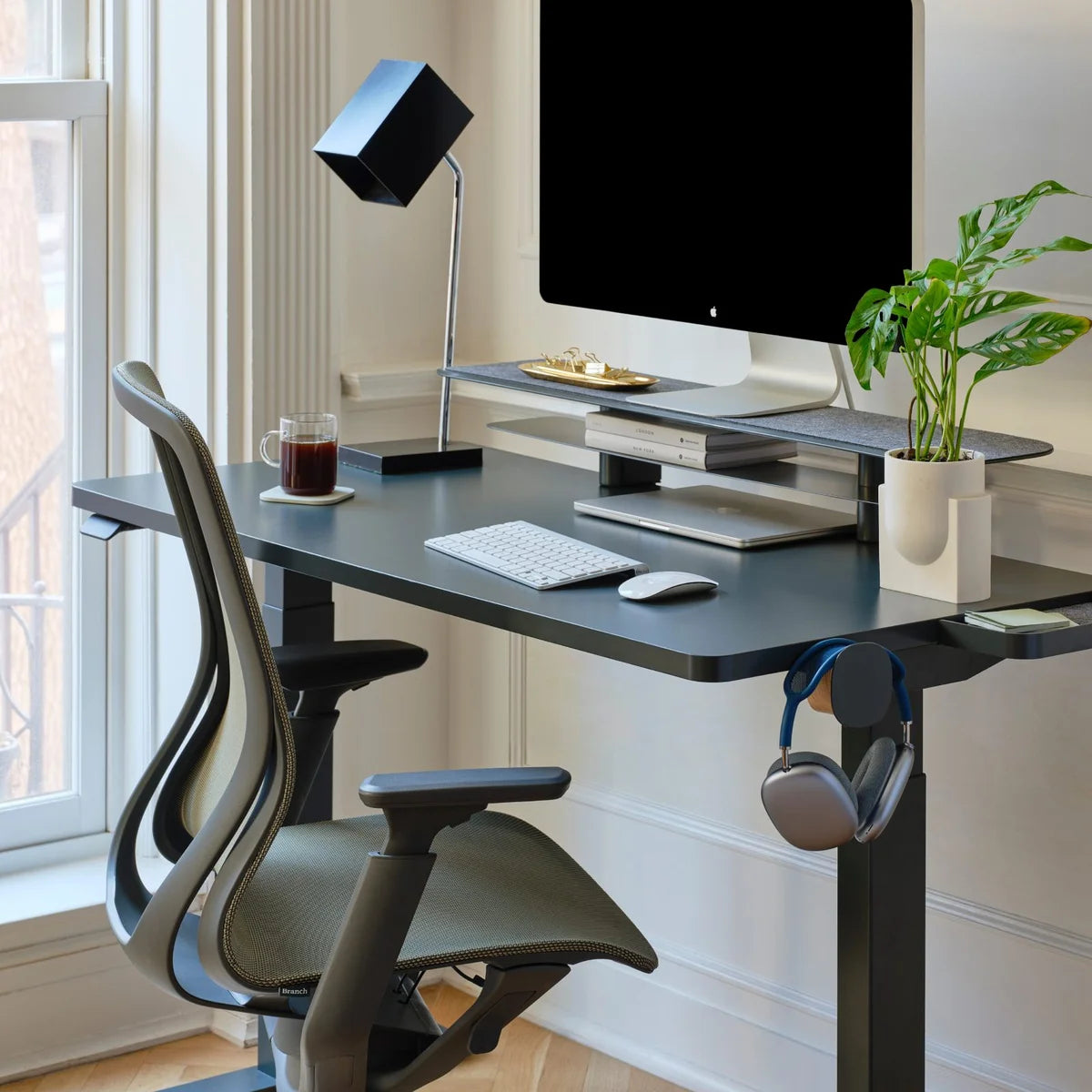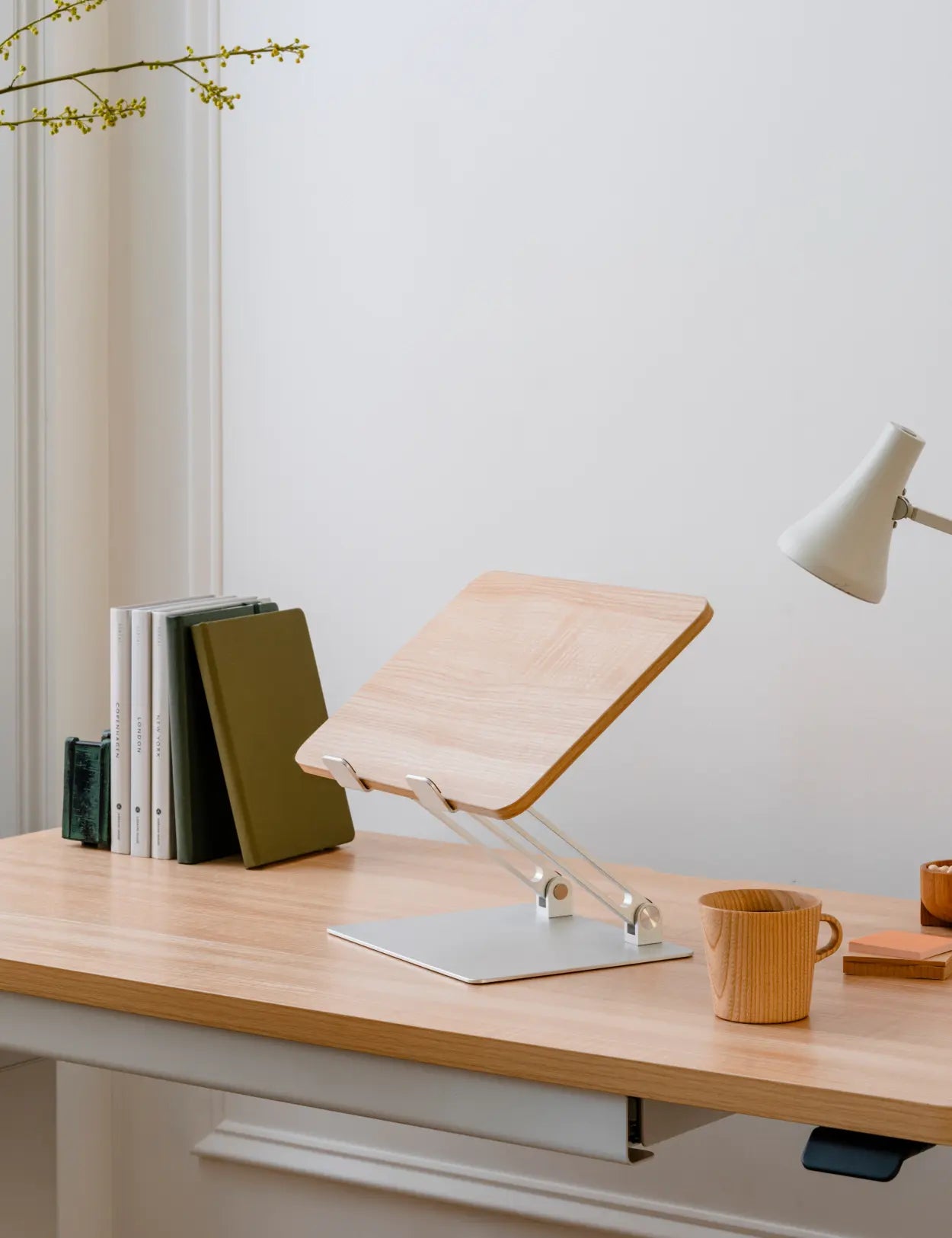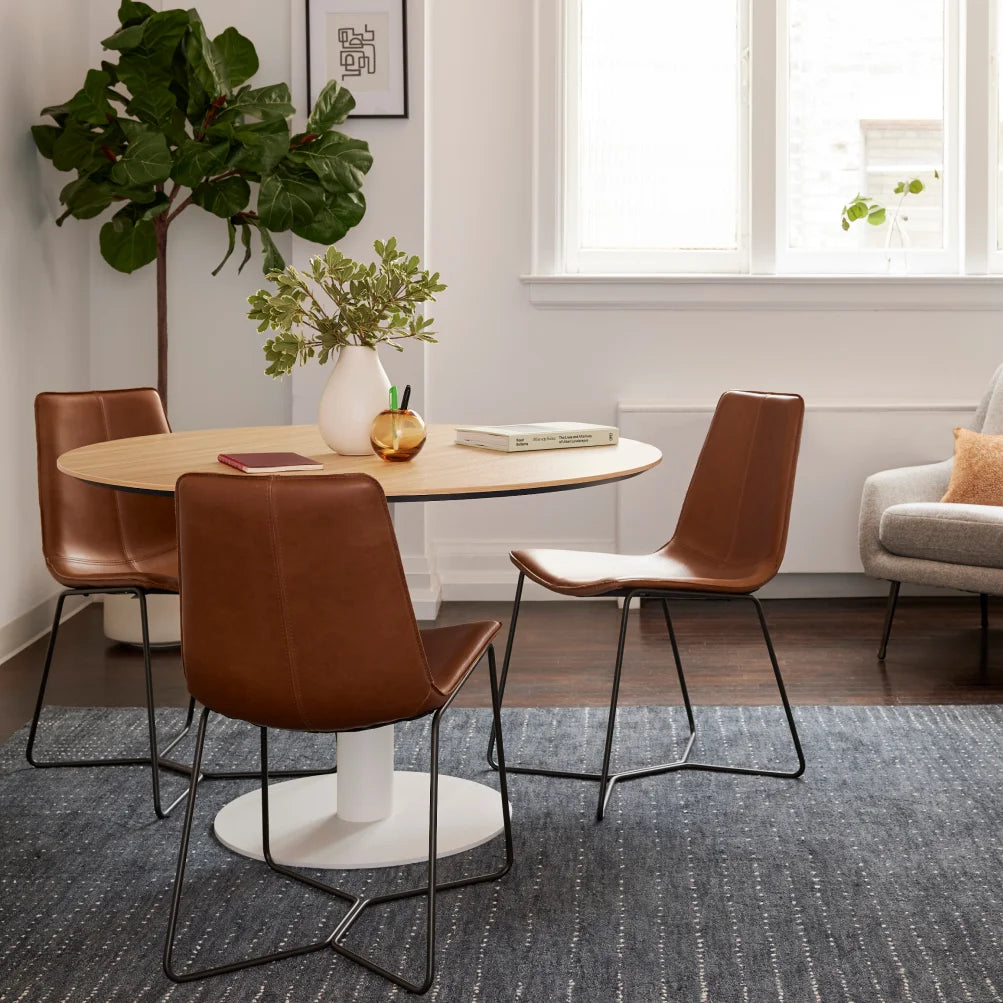Did you know office chair height can play a huge role in your comfort? With these tips, your body will thank you for mastering ergonomics.
Finding the Right Office Chair Height
- Sit on a chair that allows your legs to bend at or near a 90-degree angle with your feet flat on the floor.
- Use a measuring tape to measure the distance from the floor underneath your heel straight up to the bottom of your kneecap. Record this measurement.
- Double-check your measurement while standing, or ask a friend to help you.
For Your Consideration: Other Points of Adjustment
- Back support: Your office chair should feature lumbar support that sits in the natural curve of your lower back. The backrest should also support your upper back — a 110-degree tilt is usually ideal.
- Seat tilt: Your seat tilt helps with weight distribution and comfort. An angle of around five degrees works for most people.
- Seat depth: The seat depth should allow you to rest your lumbar curve against the backrest without creating pressure behind your knees. Some chairs will enable you to adjust the seat pan forward or backward to change the depth.
- Seat width: Your seat should be wide enough to accommodate your body without pressing on your thighs, but not so wide that it’s difficult to reach your armrests. The standard width of 19.2 inches is usually comfortable, especially if your armrests can swivel for comfort.
- Armrest position: Your armrests should support the top half of your forearms. They should not prevent you from scooting your chair close to your office desk or keyboard tray. Some armrests feature adjustable height ranges, depth, and swivel.
- Headrest position: If your chair features a headrest, it should sit at the base of the back of your skull when you recline. This should cradle your cervical spine without pushing your head forward or tilting your head back.
Tips and Tricks for a Good Fit
- Seat too high: If your chair doesn’t go low enough for your feet to touch the floor, you can use a footrest until you can upgrade.
- Seat too low: If your chair doesn’t reach to the height of the bottom of your kneecaps, you could add a seat cushion to increase the height in the meantime.
- Seat too deep: If your seat is too deep and the edge of your chair cuts into the backs of your knees with your back against the lumbar support, try adding a thick backrest cushion. This brings the back of the chair to you and can improve comfort until you can afford an upgrade.
- Armrest discomfort: If your armrests feel uncomfortable or are at the wrong height, they can exacerbate issues like carpal tunnel syndrome pain. Try using gel pads, replacing your armrests, or upgrading to an adjustable ergonomic office chair.
- Uneven weight distribution: If your weight doesn’t feel evenly distributed in the seat cushion, but your seat height is correct, try adjusting the tilt of your chair to correct this.
- Wrong desk height: Make sure you’re using an ergonomic desk height for sitting and standing work surfaces. An adjustable desk that can transition between sitting and standing heights while remembering your saved measurements for both is ideal.
- Wrong screen height: Your computer screen should be eye-level, but adjusting your chair could change this. Try a monitor arm that will allow you to customize your screen height.
- Bonus! Home office budget: If you’re setting up a new office for working from home, consider asking your HR department about a home office stipend to purchase high-quality office furniture. And if you’re still short on cash, save up for a quality chair for lasting comfort.
Which Chair Features to Look For
- Breathable woven mesh backing for comfort
- Waterfall seat edge to reduce pressure on the backs of your knees
- High-density foam cushion for even weight distribution of up to 350 pounds
- Exceeds the durability standard for commercial use (BIFMA)
- Five-star polymer base and casters
- Padded, height-adjustable lumbar support
- High-density foam cushion for even weight distribution of up to 275 pounds
- Five-star polymer base and casters
Love Your Time at the Office
On new furniture, exclusive sales and more.











